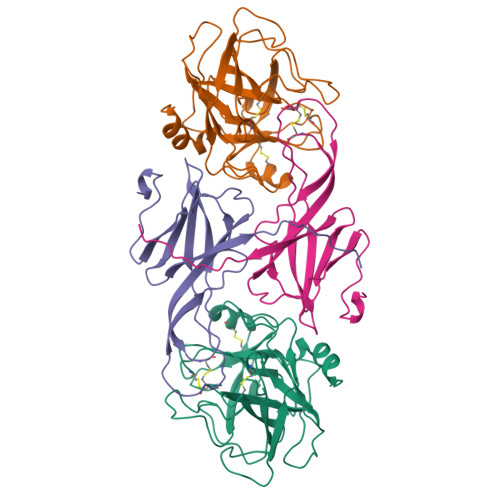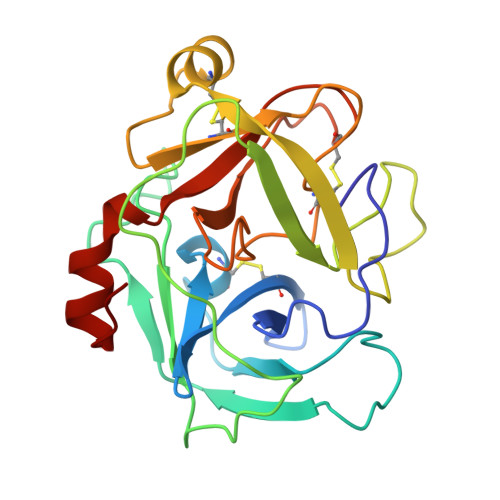Crystal structure of an ecotin-collagenase complex suggests a model for recognition and cleavage of the collagen triple helix.
Perona, J.J., Tsu, C.A., Craik, C.S., Fletterick, R.J.(1997) Biochemistry 36: 5381-5392
- PubMed: 9154920
- DOI: https://doi.org/10.1021/bi9617522
- Primary Citation of Related Structures:
1AZZ - PubMed Abstract:
The crystal structure of fiddler crab collagenase complexed with the dimeric serine protease inhibitor ecotin at 2.5 A resolution reveals an extended cleft providing binding sites for at least 11 contiguous substrate residues. Comparison of the positions of nine intermolecular main chain hydrogen bonding interactions in the cleft, with the known sequences at the cleavage site of type I collagen, suggests that the protease binding loop of ecotin adopts a conformation mimicking that of the cleaved strand of collagen. A well-defined groove extending across the binding surface of the enzyme readily accommodates the two other polypeptide chains of the triple-helical substrate. These observations permit construction of a detailed molecular model for collagen recognition and cleavage by this invertebrate serine protease. Ecotin undergoes a pronounced internal structural rearrangement which permits binding in the observed conformation. The capacity for such rearrangement appears to be a key determinant of its ability to inhibit a wide range of serine proteases.
Organizational Affiliation:
Department of Pharmaceutical Chemistry, University of California, San Francisco 94143-0446, USA.



















